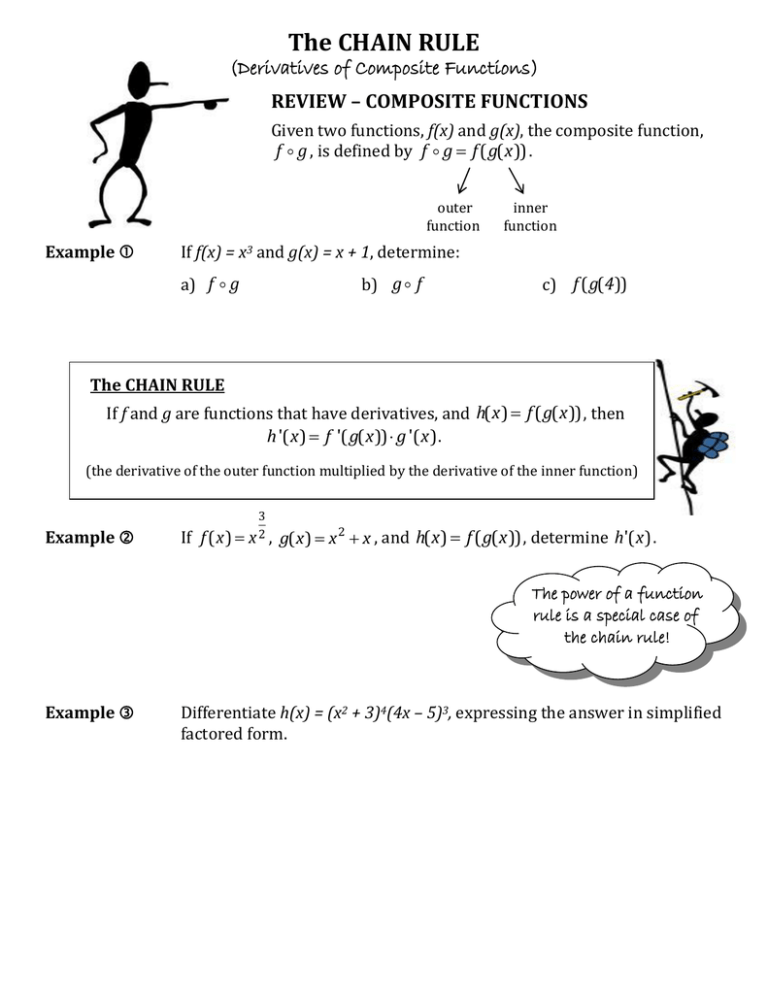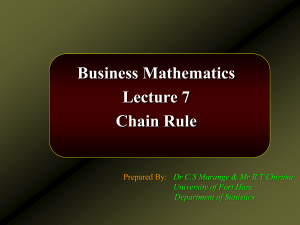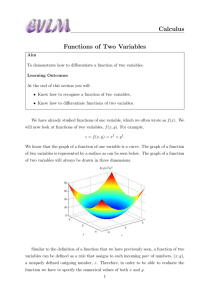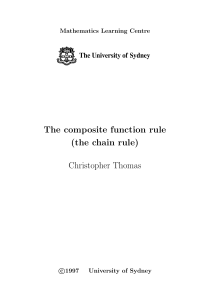Chain Rule Calculus: Composite Functions & Derivatives
advertisement

The CHAIN RULE (Derivatives of Composite Functions) REVIEW – COMPOSITE FUNCTIONS Given two functions, f(x) and g(x), the composite function, f g , is defined by f g f ( g( x )) . outer function Example inner function If f(x) = x3 and g(x) = x + 1, determine: a) f g b) g f c) f ( g(4)) The CHAIN RULE If f and g are functions that have derivatives, and h( x ) f ( g( x )) , then h '( x ) f '( g( x )) g '( x ) . (the derivative of the outer function multiplied by the derivative of the inner function) Example If f ( x ) 3 x2 , g( x ) x 2 x , and h( x ) f ( g( x )) , determine h'( x ) . The power of a function rule is a special case of the chain rule! Example Differentiate h(x) = (x2 + 3)4(4x – 5)3, expressing the answer in simplified factored form. Example Differentiate 𝑓 𝑥 = 2𝑥−1 6 𝑥+2 . The CHAIN RULE in Leibniz Notation If y is a function of u and u is a function of x, then y is a composite dy dy du dy function and and du exist. , provided dx dx du dx du Example a) Determine dy in each of the following: dx y u and u = 2x2 + 3 b) y u3 2u 1 and u 2 x Example If y = u4 – 3u2 and u = x2 determine dy at x = –1 using the chain rule. dx Homework: p.105–106 #7, 8, 10–14, 17b Plus: Differentiate y = (x – 1)2(x + 3)5(2x – 5)3.




